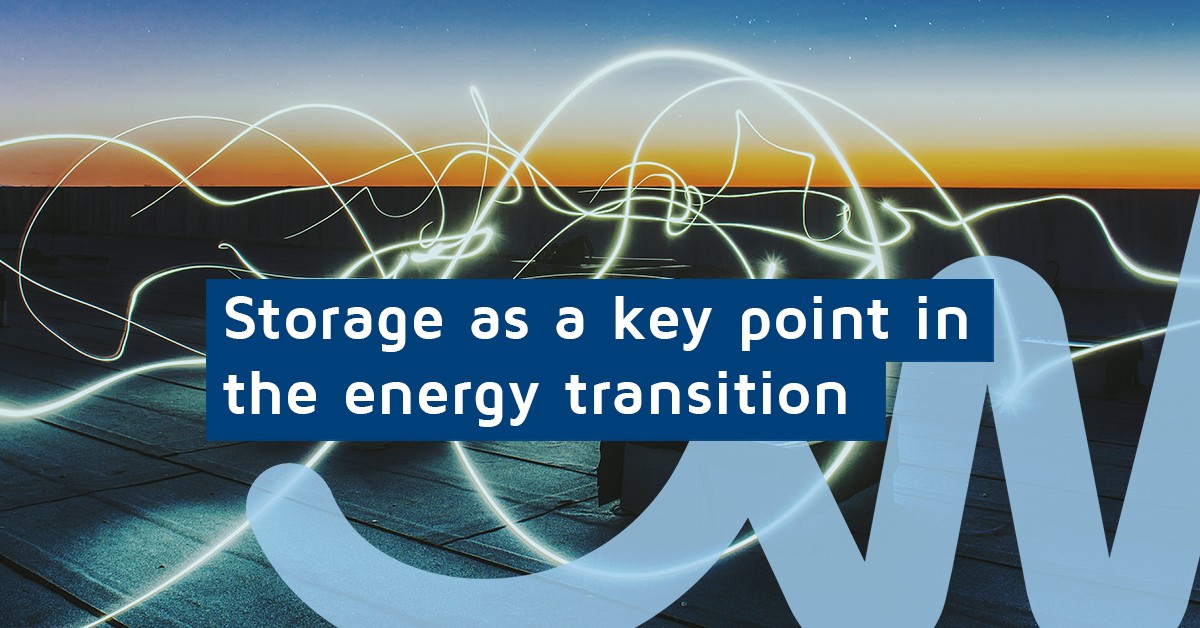Storage as a key point in the energy transition
If there is one concept linked to the energy transition, it is energy storage. Although not a generation technology in its own right, storage enables the integration of other generation technologies to work together, creating a whole new range of opportunities for the renewable energy sector.
Where solar or wind power is not available, storage will play an essential role in making power generation more flexible, supporting the integration of renewables and ensuring the stability of the electricity system. Generating, transporting and transforming electricity can be done relatively quickly, but storing it in large quantities is still technologically complex and costly.
According to the latest forecasts from BloombergNEF (BNEF), worldwide energy storage installations will reach a cumulative 358 GW/1,028 GWh by the end of 2030, more than twenty times the 17 GW/34 GWh online reached by the end of 2020.
Five reasons why it is essential to have energy storage systems in place
- Availability of energy at any time. A consolidated energy storage system can guarantee electricity supply and help the electricity system in certain "black-out" cases.
Storage can provide backup power during outages or interruptions of the electricity system, which allows for a better adaptation of power generation to consumption. Also, producing energy in different time slots can contribute to price stabilization in the electricity market due to the difference between off-peak and peak hours. - More energy savings. Implementing hybrid systems and BESS (Battery Energy Storage System) storage plants is one of the possible solutions to the main problems of energy management and distribution. During off-peak hours (periods of the day with low energy consumption), the surpluses generated by renewable energies can be stored to supply the grid with the energy most needed.
Thus, when demand changes rapidly, and flexibility is required, energy storage can inject or store energy, coordinating with the momentary needs of the grid. - Greater sustainability of renewables. It is not enough to produce clean energy but to do so in the most responsible way for the planet. Energy storage facilitates the promotion of new renewable energy parks and plants capable of responding to the demand of their environment. According to a report published by the Global Battery Alliance, batteries could enable a 30% reduction in CO2 emissions in the transport and energy sectors. These two sectors alone account for 40% of greenhouse gas emissions today.
Let us not forget that, among the challenges facing energy storage globally, the European Union's ambition to extend the useful life of batteries and make them as sustainable a technology as possible stands out. - Key support for the energy transition. Storing the energy produced in batteries or other systems is one of the essential lines of the 2030 agenda to move towards a future less dependent on conventional generation sources, such as coal or oil.
Thus, the Roadmap for the next decade to achieve the objectives of the Paris Agreement will hinge on this technology, boosting the efficiency of solar photovoltaic and wind energy.
Batteries will be one of the central axes for decarbonisation on the European continent, as they are expected to gain prominence as they break down their barriers to viability. Furthermore, the energy matrix can generate tremendous market opportunities through the entry of storage that will be reflected in socio-economic opportunities; according to the Batteries Europe 2020 report, storage is expected to create three to four million new jobs.
Batteries are seen as one of the main levers in the short term to decarbonise road transport and thus support the energy transition. Moreover, this technology is considered the basis of a renewable energy system capable of controlling global emissions in order not to exceed the 2°C targets agreed in the Paris Agreement. - Generator of future opportunities. Its implementation in renewable energy parks and plants leads to greater efficiency and security in the electricity system. In addition, new energy storage technologies will become fundamental elements of future electricity systems, such that electricity storage can add value to every link in the electricity supply chain.
Energy storage is still a field with significant challenges such as developing green hydrogen, increasing battery capacity, reducing the price of storage systems or the design-to-recycle approach. Even so, the energy policies of all countries envisage significant growth in this technology, which will undoubtedly be a critical factor in the global transition towards a sustainable energy system.
As independent advisors on renewable projects worldwide, we are convinced that energy storage will be the key to a future led by renewable energy. If you need support in your storage project, we will be happy to help. Shall we talk?
When you subscribe to the blog, we will send you an e-mail when there are new updates on the site so you wouldn't miss them.

